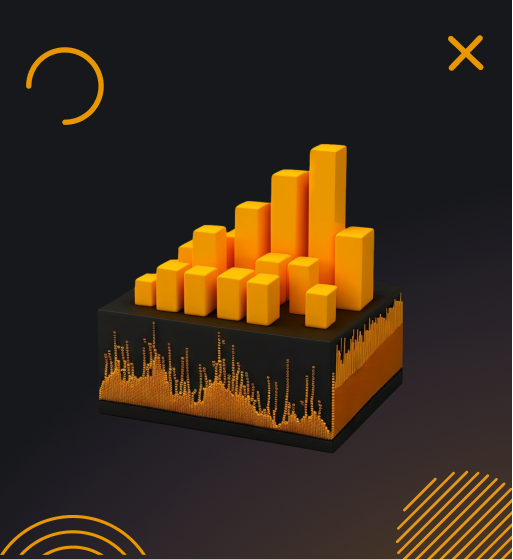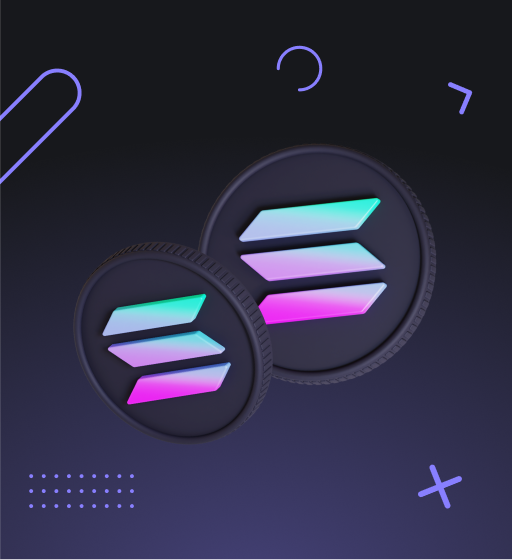
Priority Fees allow crypto developers and traders to boost the speed of Solana transaction processing when needed - a critical ability during periods of high network congestion.
In this comprehensive guide, you'll learn all about Priority Fees, including:
- How fees work in Solana
- The role of Priority Fees
- How to implement Priority Fees programmatically
- Best practices when leveraging Priority Fees
Plus:
- An FAQ section on common questions
- Code examples
- Reference tables and visual diagrams
Whether you are building dApps or making time-sensitive crypto trades, understanding Priority Fees is essential to optimizing transaction times on Solana. Let's dive in!
How Transactions Work in Solana
To understand Priority Fees, we first need to explore how transactions function in Solana more broadly.
When users want to execute an on-chain action, they generate and sign transactions consisting of instructions that tell validators what to do. For instance, if Alice wants to send Bob 10 SOL, she creates a transfer instruction.
Alice then sends this signed transaction to the network's current leader to be processed. Blocks in Solana use a hybrid FIFO queue combined with Priority Fees to order transactions.
After execution, transactions are propagated via Turbine, and transaction fees are paid. A portion of the fees are burned, while the rest goes to the leader.
Burning fees reinforce the value of SOL. Paying leaders incentivizes participation. Overall, fees provide:
- Compensation for validators securing the network
- Constraints on network spam by introducing real-time costs
- Long-term sustainability independent of inflation rewards
How Fees Are Calculated
Solana transaction fees have two main components:
- Base Fee: A static fee paid per signature to fund validator payments
- Resource Consumption Cost: A dynamic fee based on computational units (CUs) consumed executing transaction instructions
The base fee ranges from 50% to 1000% of the 10,000 lamport target fee per signature. The maximum CU budget per transaction is 1.4 million. For the entire block, there is a cap of 48 million CU.
Exceeding either limit will halt transaction execution and return an error.
Transaction Fees = Base Fee x Signatures
+ Compute Units Consumed x CU Price
Heavy transactions can thus fill up blockspace rapidly. Solana introduced Priority Fees so users can pay extra for faster processing during congestion.
What Are Priority Fees?
Priority Fees allow transactions to jump ahead of others in the leader's queue. This prevents delays for time-sensitive activities like arbitrage trades.
Here is the formula to calculate Priority Fees:
Priority Fees = Compute Budget x Compute Unit Price
Where:
Compute Budget = Number of Instructions x Compute Unit Limit
Users dictate priority by setting the Compute Unit Price and optional Compute Unit Limit via SetComputeUnitPrice and SetComputeUnitLimit instructions.
Higher Priority Fees equal higher priority in the transaction queue. Let's see how to add Priority Fees programmatically.
Implementing Priority Fees
Adding Priority Fees requires adding setComputeUnitPrice or setComputeUnitLimit instructions to transactions:
const computeUnitLimitIx = ComputeBudgetProgram.setComputeUnitLimit({
units: 300_000,
});
const computeUnitPriceIx = ComputeBudgetProgram.setComputeUnitPrice({
microLamports: 1,
});
const txn = new Transaction();
// Set compute unit price
txn.add(computeUnitIx);
// Set compute unit limit
txn.add(computeUnitPriceIx);The compute unit price sets the fee to pay per CU. The limit controls the max CUs, capping total fees.
Omitting SetComputeUnitLimit defaults to the max per instruction. Leaving out SetComputeUnitPrice sets the priority to a minimum.
Note: SetComputeUnitLimit should come before other instructions that consume CUs. If the limit is too low, the transactions will fail.
You can check recent priority fees paid via the getRecentBlockhash RPC method. Use this data to choose appropriate priority levels.
Best Practices
Follow these tips when using Priority Fees:
- Place SetComputeUnitLimit first to avoid failures
- Check recent priority fees paid to estimate amounts
- Minimize requested CUs to reduce fees
- Don't use unnecessarily; only for time-sensitive transactions
💡 Pro tip: Some wallets discourage manual Priority Fee setting. Instead, leverage built-in transaction optimization when possible.
With the fundamentals covered, let's turn to some common questions.
FAQ
Here are answers to frequent questions about Priority Fees in Solana:
Q: Do I always need to pay a Priority Fee?
A: No. Priority Fees are useful for time-sensitive transactions during congestion but are optional otherwise. They help prioritize your transaction over others.
Q: What happens if I don't pay a Priority Fee?
A: Your transaction will default to the minimum priority. It will still process but may experience delays during high network usage.
Q: How high should my Priority Fee be?
A: Check recent priority fees via RPC methods. Pay slightly above average congested network rates for your desired priority level. Don't drastically overpay.
Q: Can I pay unlimited Priority Fees to guarantee fast confirmation?
A: No, there are limits to prevent abuse. Transactions exceeding the 1.4 million compute unit budget fail despite paid fees.
Q: Where do Priority Fees go after being paid?
A: Like base fees, a portion of Priority Fees are burned and the rest goes to the leader processing the transaction.
Key Takeaways
Here are the core tips to remember about Priority Fees in Solana:
- They allow prioritizing transactions for faster processing during congestion
- Implement by adding setComputeUnitPrice and setComputeUnitLimit instructions
- Check recent rates paid to estimate appropriate amounts
- Position setComputeUnitLimit first to avoid failures
- Use conservatively, only when speed is a necessity
- Can't pay unlimited fees; caps protect the network
Understanding Solana Priority Fees unlocks speed and efficiency - critical abilities for builders and traders alike when leveraging this high-performance blockchain.







